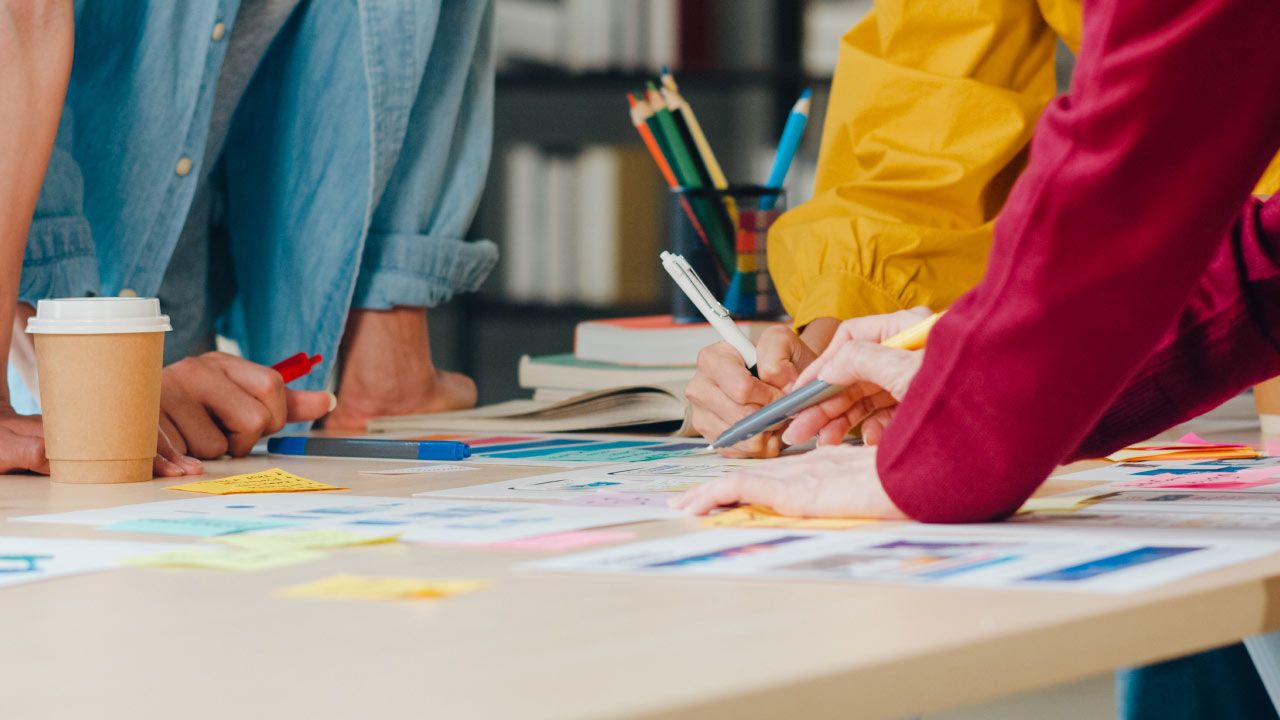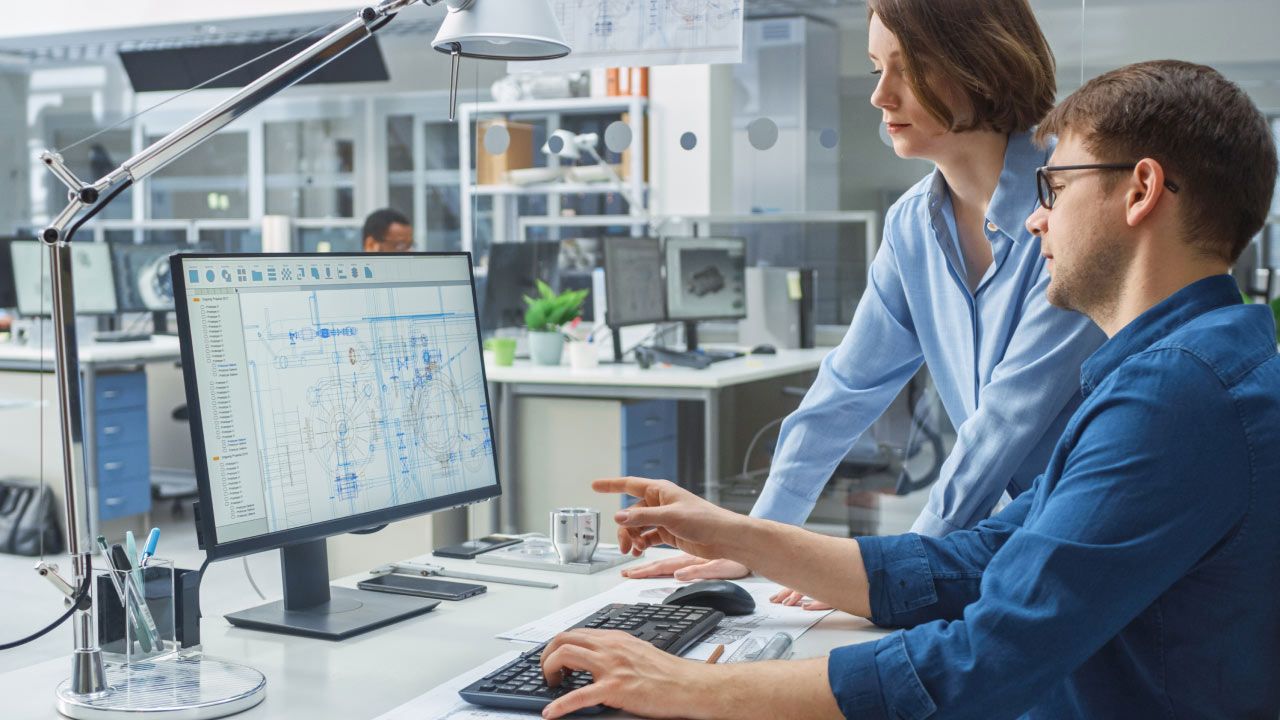Solving Proportions in Product Design: How to Find the Missing Extreme When the Product of the Means is 20
By Marco Franzoni • June 27, 2024

Introduction: Solving Proportions in Product Design
Understanding proportions in design
In the ever-evolving field of product design, understanding proportions is crucial for creating products that not only meet but exceed customer expectations. Proportions play a vital role in ensuring that every element of the design is balanced and aesthetically pleasing. This concept is especially important in continuous product design, where designers must constantly iterate and enhance products based on user needs and market feedback.
The importance of the product of the means in design
One key mathematical principle that often comes into play in product design is the product of the means. This principle helps designers solve proportions, ensuring that different elements of a product are in perfect harmony. By mastering this concept, designers can reduce costs, enhance brand value, and deliver products that delight customers. Whether you are a designer working in a large company or a small agency, understanding how to use the product of the means can elevate your design process and improve your ability to craft products that meet market demands.
By focusing on customer engagement and a customer-centric approach, designers can better align their products with user needs and achieve greater success. Through an iterative process that includes thorough market research and continuous feedback, product design services can help businesses create innovative and valuable products. This approach not only leads to better products but also enhances the skills of design teams and boosts overall profitability.
In this blog post, we'll explore the role of proportions in product design, how to apply the product of the means, and the benefits it brings to your projects. Join us as we delve into the world of product design and discover how this simple mathematical principle can make a significant impact on your work.

Continuous Product Design and Its Customer-Centric Approach
What is continuous product design?
Continuous product design is a dynamic and iterative process that focuses on the constant improvement and evolution of a product. Unlike traditional product design, which might involve long periods of development before a product is released, continuous product design emphasizes ongoing updates and enhancements based on user feedback and market research. This approach ensures that products stay relevant and aligned with customer needs, allowing businesses to quickly adapt to changes in the market and deliver innovative solutions.
Benefits of a customer-centric approach
A customer-centric approach places the customer at the heart of the design process, ensuring that their needs and preferences drive product development. This method not only enhances customer engagement but also leads to higher satisfaction and loyalty. By incorporating continuous feedback and conducting thorough market research, designers can create products that are more likely to meet and exceed customer expectations. This approach also helps in reducing costs associated with extensive redesigns by addressing potential issues early in the design process.
In summary, continuous product design, coupled with a customer-centric approach, enables companies to build products that resonate with users and stand out in the market. This strategy fosters a culture of innovation, where designers and businesses can continuously craft and deliver value through their products.
Enhanced Customer Satisfaction and Product-Market Fit
How continuous design improves satisfaction
Continuous product design significantly enhances customer satisfaction by ensuring that products are always evolving to meet user needs. Through an iterative process, designers can implement product enhancements based on direct feedback from customers. This approach not only addresses user needs but also creates a sense of engagement and delight as customers see their input reflected in the product. By focusing on continuous improvement and leveraging market research, companies can achieve a high level of customer satisfaction, ensuring that their products remain relevant and valuable.
Aligning products with market needs
Aligning products with market needs is crucial for achieving a strong product-market fit. Continuous product design allows businesses to stay focused on the changing demands of the market. By conducting regular market research and incorporating feedback, designers can ensure that their products are not only innovative but also aligned with what customers truly want. This approach helps companies deliver products that meet market demands, reduce costs associated with extensive redesigns, and ultimately achieve higher profitability. By staying responsive and adaptable, businesses can maintain a competitive edge and create products that truly resonate with their target audience.
Rapid Iteration and Faster Time-to-Market
Importance of rapid iteration
Rapid iteration is essential in product design as it allows companies to quickly respond to user needs and market changes. By continuously refining and improving products through an iterative process, businesses can reduce costs and enhance their offerings. This approach fosters innovation and ensures that products remain relevant and competitive. Speed in iteration builds confidence within the design team, allowing them to deliver high-quality products efficiently.
Techniques for reducing time-to-market
To reduce time-to-market, designers can employ several techniques. Agile methodologies and a focus on completing smaller, manageable tasks can significantly speed up the development process. Utilizing feedback from market research and customer engagement helps prioritize features that users need most, streamlining the project. By adopting these practices, companies can elevate their market position, deliver products faster, and achieve greater success in meeting customer expectations.

Product Design Services for Any Stage of Your Product's Life Cycle
Conceptualization and initial design
Product design services are essential for guiding your product through every stage of its life cycle. In the conceptualization phase, designers focus on generating innovative ideas and creating initial design concepts. This stage involves understanding user needs and market demands to ensure that the product idea is viable and valuable. Effective conceptualization sets the foundation for developing products that resonate with customers and align with business goals.
Development and prototyping
During the development and prototyping stage, designers turn concepts into tangible prototypes. This phase includes refining design features, testing functionality, and incorporating feedback to make necessary adjustments. Product enhancements are made to address any issues identified during testing, ensuring that the final product meets high standards of quality and user satisfaction. Prototyping is a critical step in the iterative process, helping companies reduce costs and avoid potential pitfalls before full-scale production.
Final product and market launch
The final stage involves preparing the product for market launch. This includes finalizing all design elements, ensuring that the product aligns with brand assets, and crafting a strategic marketing plan to introduce the product to the market. Successful product launch requires a well-coordinated effort between design, marketing, and sales teams to deliver a product that meets customer expectations and achieves business objectives. By utilizing comprehensive product design services, companies can create, develop, and launch products that stand out in the market and delight customers.
Establishing a Culture of Learning and Adaptation
Embracing change and feedback
To stay competitive, companies must establish a culture of learning and adaptation. Embracing change and actively seeking feedback from customers and stakeholders are crucial components of this culture. Feedback helps identify areas for improvement and ensures that product design aligns with user needs. By fostering an environment where feedback is valued, organizations can continuously refine their products and processes, leading to greater innovation and customer satisfaction.
Continuous improvement in design
Continuous improvement is a cornerstone of successful product design. Encouraging a mindset of ongoing learning and adaptability within the design team builds confidence and enhances skills. This approach involves regularly evaluating design processes, integrating new ideas, and staying responsive to market changes. By prioritizing continuous improvement, companies can deliver innovative products that consistently meet and exceed customer expectations, driving long-term success and profitability.
What Skills Do You Need to Become a Creative Designer?
Essential creative skills
To become a successful creative designer, certain skills are paramount. A strong sense of creativity and innovation is essential, enabling designers to generate unique ideas and craft compelling designs. Effective communication skills are also crucial, as designers must articulate their vision to clients and colleagues. Problem-solving abilities allow creative designers to address challenges and develop effective solutions that meet user needs.
Technical skills and tools
In addition to creative skills, technical proficiency with design tools is necessary. Mastery of software such as Adobe Creative Suite, including Photoshop and Illustrator, is often required. Understanding how to use these tools to create brand assets, such as logos and marketing materials, is vital for delivering professional-quality designs. Confidence in using these tools and continuously developing technical skills ensures that designers can meet the demands of any project and contribute effectively to their company's success.

What Education Level is Required to Become a Creative Designer?
Educational paths for designers
Becoming a creative designer typically requires formal education in design or a related field. Many designers hold a bachelor's degree in graphic design, fine arts, or a similar discipline. These programs provide foundational knowledge and skills necessary for success in the industry. Additionally, courses in marketing, branding, and communication can further enhance a designer's capabilities.
Certifications and additional training
Certifications and ongoing training are also important for professional development. Specialized certifications in design software and methodologies can elevate a designer's credentials and boost confidence. Continuous learning and staying updated with industry trends ensure that designers are prepared to meet evolving market demands and deliver high-quality work.
Product Development and Design Teams
Roles and responsibilities
Product development and design teams play a crucial role in bringing ideas to life. Each team member has specific roles and responsibilities, from concept creation to final design. Designers focus on crafting visual elements and ensuring usability, while product managers oversee the development process, aligning projects with business goals. Collaboration between these roles is essential for successful product development.
Collaboration between teams
Effective collaboration between product development and design teams ensures that all aspects of a project are aligned and executed efficiently. This involves regular communication, shared goals, and integrated workflows. Stakeholders, including clients and colleagues, provide valuable feedback during the ideation phase, helping to refine concepts and deliver high-quality products that meet market needs.
Customer Support and Feedback Teams
Role of customer feedback in design
Customer feedback is invaluable in the design process. Support teams collect and analyze feedback to understand customer experiences, needs, and pain points. This information helps designers identify areas for improvement and innovate more effectively. Feedback from customers ensures that the final product meets their expectations and enhances overall satisfaction.
Integrating feedback into the design process
Integrating customer feedback into the design process involves close collaboration between support teams and designers. Regular feedback loops enable continuous product enhancements and ensure that user needs are addressed promptly. This iterative approach not only improves the product but also strengthens customer engagement and loyalty. By incorporating feedback, organizations can stay aligned with market demands and deliver products that truly resonate with users.
Examples of Creative Roles
Multimedia designer
A multimedia designer creates engaging content by combining text, audio, images, and animations. These professionals work on various projects, including websites, video games, and advertising campaigns, requiring a blend of technical skills and creative vision. They play a crucial role in bringing ideas to life and communicating brand messages effectively.
Graphic designer
Graphic designers focus on visual concepts, crafting layouts, logos, and brand assets that represent a company’s identity. They collaborate with clients and teams to develop visually appealing designs that meet business objectives. Their work spans various mediums, from print to digital, showcasing their versatility and design skills.

Where Do Creative Designers Work?
Common workplaces for designers
Creative designers work in a variety of settings, from design studios and advertising agencies to large corporations and tech companies. These environments provide opportunities to collaborate with other professionals and work on diverse projects that require a range of design skills.
Freelancing and remote work opportunities
Many creative designers also pursue freelancing and remote work opportunities. This flexibility allows them to work with multiple clients and companies, offering their expertise on a project-by-project basis. Freelancing provides the freedom to choose projects that align with their interests and skills, making it a popular choice for many in the field.
Conclusion: The Future of Product Design
Recap of key points
In this blog post, we explored the importance of proportions in product design and how continuous product design and a customer-centric approach enhance customer satisfaction and product-market fit. We also discussed the critical roles of rapid iteration, effective collaboration, and feedback integration in delivering successful products.
Looking ahead in product design
As we look to the future, product design will continue to evolve, driven by innovation and continuous improvement. Companies must stay responsive to market trends and customer needs, leveraging new technologies and design methodologies. By fostering a culture of learning and adaptability, businesses can achieve greater success and elevate their product offerings in an ever-changing market.